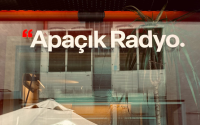9 November 2006
U.N. climate talks were split on Thursday over whether to permit burial of heat-trapping gases in developing nations under the U.N.'s Kyoto Protocol."I can't predict whether it's going to be possible for this (meeting) to reach agreement on that issue given the very wide divergence of views," Yvo de Boer, the head of the U.N. Climate Secretariat, told a news conference.Some delegates at the Nov. 6-17 talks favour giving investors from industrialised nations credits for projects that would strip greenhouse gases from Chinese or Indian coal-fired power plants, for instance, and bury them.But others fear there are too many uncertainties about capturing and storing carbon dioxide, such as trying to ensure that geological storages sites are leak-proof.Under the Kyoto Protocol's Clean Development Mechanism (CDM), investors in projects such as wind farms in Morocco or hydroelectric dams in Honduras can claim credits back home for helping avert greenhouse gases emitted by fossil fuels.The CDM could channel perhaps $100 billion to developing nations. The CDM board has previously rejected two proposed methods for allowing capture and storage of carbon dioxide."A number of countries expressed strong interest in including (carbon capture and storage) under the CDM," de Boer said. "While others still have nervousness on the technology and that greenhouse gases might escape."Still, de Boer said he was hoping for decisions on the CDM, as well as about whether to widen the CDM to include destruction of the powerful greenhouse gas HFC23, a by-product of the refrigeration industry."Many concerns and problems were highlighted," about carbon capture," said Jose Domingos Miguez, the chair of the CDM executive board. "There are no modalities and procedure that could cope with it."He also pointed to problems with seepage, for instance in the event of an earthquake, or about whether cement used to plug storage sites might get eaten away by carbon dioxide.Some demonstration projects for carbon capture are up and running, for example at Norwegian oil company Statoil <STL.OL>, but high costs are a barrier. The United States aims to start capturing carbon dioxide from a coal-fired power plant in 2012, to be built in Illinois or Texas.Still, de Boer said that he believed that carbon capture would be part of the long-term solution to climate change, with or without the CDM. For developing nations such as China and India which have cheap coal "probably carbon capture and storage is going to be one of the main technologies that is going to allow you to do something about electricity emissions," he said.Kyoto obliges 35 nations to cut their domestic emissions by 5 percent below 1990 levels by 2008-12 in a first legally binding step to avert catastrophic disruptions to the climate.
http://today.reuters.com/News/CrisesArticle.aspx?storyId=L09487815






